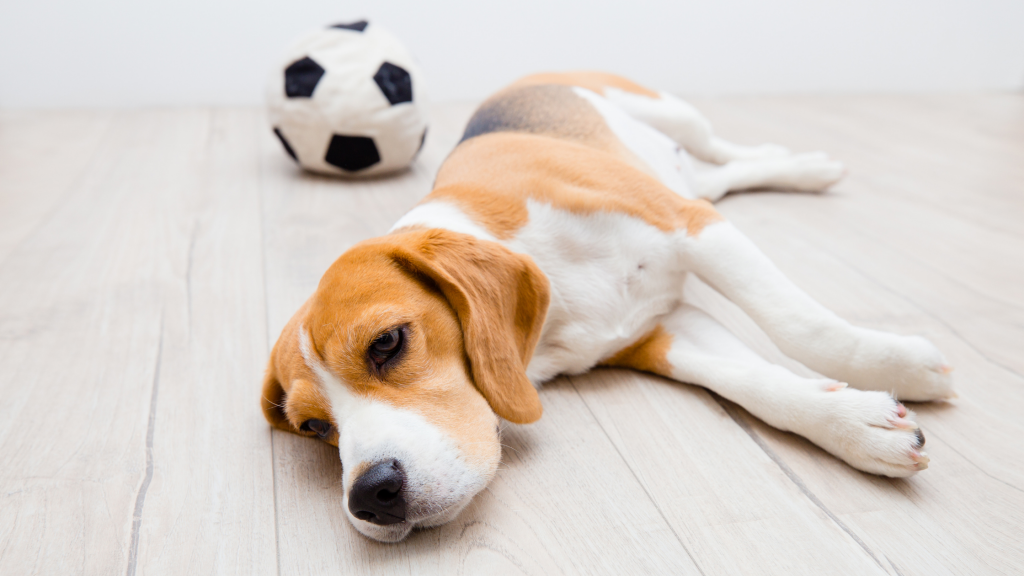Separation anxiety in dogs can be challenging to train out. However, with the right tools and persistence, you can be highly successful in your dog separation anxiety training. At its core, helping overcome dog separation anxiety is the feeling that your dog gets when they think you will not return. Many dogs feel that they need to be near you, and when they are not, they feel uncomfortable. These feelings of discomfort can manifest in undesirable ways; this can include barking, scratching, chewing, excessive whining, and pacing.
Dogs are family animals, and they usually need the comfort of others to feel good. However, this is often a learned behaviour, as even dogs in the wild (dingoes and wolves) will spend time alone and away from their family units. Dogs should be provided with time alone when they are puppies to explore and find out how the world works. If a puppy is not allowed time on its own, either through our affection or their unwillingness, it cannot learn this vital skill. Once a dog has passed their puppy stage, often behaviours are planted, and they can be hard to shift.
Separation anxiety in dogs can be exhausting and frustrating, especially when poor behaviours manifest. A well-adjusted dog will usually sleep when nothing is happening, such as when their owner is away for work. But for a dog suffering from separation anxiety, they will do things to entertain themselves and try to make their feelings go away. These acts are a type of distraction technique, but they can be quite destructive. While there is medication available from vets, the best method is to train this behaviour out. As dogs are highly motivated by food and willing to learn new skills, training may not take that long, provided you are persistent. This article will cover some techniques used for dog separation anxiety training and give you the skills you need for curing dog separation anxiety quickly.
Tips for curing dog separation anxiety quickly
As separation anxiety is a behaviour rather than a physical problem, there is no ‘cure’. However, you can use training to remove unwanted behaviours that can help your dog overcome separation anxiety. The majority of dog breeds will respond very well to training and structure, although there are some exceptions. For stubborn and difficult to train breeds (e.g. Chihuahua), you will need to spend more time with them.
The first step of training your dog requires learning what is causing the behaviour. Try to work out what is the main instigator of the issue. Pay attention to your dog and see what is happening right before the problem starts. In most cases of separation anxiety, there is a trigger. Dogs are very aware of routine and may respond to simple things as indicators for what is happening next. For example, you may find that the simple act of picking up your keys to leave will set your dog off. An easy fix for this is to move your keys to another location. Once you uncover the trigger, you can start training your dog to be less upset about being left alone.

Separation anxiety in dogs
When it comes to helping dogs overcome separation anxiety, there are certain levels of severity. These start with simple whining and whimpering and go towards highly destructive behaviours. Mild cases are generally not too concerning; however, training these out of your dog will stop it from becoming a larger problem. For dogs that tend to be destructive, either to themselves or your home, you may need some additional equipment to help.
For minor separation anxiety, you can follow a few simple steps to make your dog feel better. Start by breaking up your routine, including leaving and arriving at different times of the day. Don’t make a fuss when you leave or when you come back. If you want to say goodbye to your dog, do it at least ten minutes before leaving. When you arrive home, ignore your dog for a few minutes before patting them or giving them any attention. Taking these extra few minutes will give your dog some time to calm down. You are also showing them that your arrival or departure is not a big deal. To provide some comfort to your dog while you’re away, you can leave some of your clothes in their bed. These old clothes will give a sense of security to your dog.
With a dog that is destructive with their separation anxiety, you can use the training outlined above. However, you may be better off isolating your dog into one room. Usually, basic obedience training can help get your dog to understand that it is not going to be a problem when you leave. Place them in the room for isolation, and get them to sit and stay as you leave the room. Leave them in there for about five minutes, then open the door. Tell your dog to sit, then wait until they’re calm before offering a treat or any praise. You can place their crate and toys in this room to make it more comfortable for them. Eventually, with continuous training, your dog will become more relaxed with you leaving.
How do I calm my dog down when excited?
When dogs are overly excited when meeting people or as you enter the door, it is an indicator of separation anxiety. A dog that is excited to see you is not a bad thing, but they should calm down after a minute or so. If your dog presents any undesirable behaviour when they greet you (barking, etc.), that can be a sign they are developing separation anxiety. It is in these early stages that you can help your dog to overcome any problems. When you come home to greet them, don’t be overly excited to see them. While it can be fun to share in their excitement, if you act in the same way they do, you’re reinforcing their behaviour.
If your dog does not calm down shortly after you come home, you’ll need to train them. For curing dog separation anxiety quickly, training is the ideal solution. While you can get over the counter medication, often these take some time to be effective, usually from 15 minutes to two hours. Using over the counter medication is okay if you plan correctly. However, the best method is training. When you use medication to cure your dog, you are not treating the core problem. Again, training will take time, but in the long run, you’ll have a better and more well-adjusted dog.

How to help a dog overcome separation anxiety
Dogs naturally want to be with others; however, if they are experiencing anxiety by being left alone, this can cause problems. When considering how to help a dog with separation anxiety, you need to think about how much time you’re willing to put in. All dogs will benefit from training to help with their separation anxiety. However, some dogs may take longer to train than others. If you are time-poor, you can seek the services of a professional trainer. These trainers will usually work in your home or take your dog away for a few weeks. Each trainer has different techniques, but they should have a list of successful clients. To work out if a particular trainer is right for you, have a look through some of their reviews. While a professional trainer is an excellent way to go, these can be expensive. Even with training from a professional, you’ll still need to follow some basic guidelines.
If your dog tends to bark when you’re not at home, you can invest in an anti-bark collar. These collars will spray citrus or deliver a mild shock to stop your dog from barking. Although a shock collar sounds terrible, they are quite mild and will not harm your dog. Over time your dog will understand that when they wear the collar, they should not bark. This method will not cure your dog of having anxiety, but it will stop them from barking. A barking collar will deliver fast results and will deter your dog from barking. Barking dogs can be highly problematic and can result in complaints from nearby neighbours. They are best used as a short term solution while you are training your dog out of their separation anxiety.
Dog separation anxiety training
When considering how to help a dog with separation anxiety, proper training is the best answer. The time that it takes to train your dog out of separation anxiety will depend on your commitment. All training benefits from repetition, and as anxiety is a learned behaviour, it may take time to correct. Before you start any training, it is best to have the right equipment. Make sure you have a good supply of suitable treats and that you have the time to complete the training correctly. Training can happen at any time, and you should not have a set time for separation anxiety training. For regular training, you can have set times, but it could lead to further issues when anxiety training.
To start separation anxiety training, place your dog into a room and get them to sit. Then give them a few pats and a treat, use the command stay. Then you can walk out the door and close it behind you. Give your dog about thirty seconds or so, and then open the door again. If they get up to see you, give them the command to sit and reward them after they comply. You can repeat this up to about three times in one session. During the next session, you close the door for about a minute before you open it. Continue extending the time when the door is closed. You can add in a crate during later training sessions and have your dog go to the crate before closing the door. Separation training is a gradual process, but your dog will understand and be free from any worry or stress with time.
The next stages for separation anxiety
After you’ve been training your dog for a few weeks, you should be able to have your dog wait about a half-hour. The following steps are to continue building up times that you are away. You can test your dog by placing a few of their favourite toys in the room and leaving for about an hour. When you return, make sure you do not make a fuss. If your dog is excited to see you, make sure they sit or return to their crate before you offer then a reward. Once your dog can handle you leaving for about six hours, you can consider the training a success. Your dog should now be happy and healthy and not stress out or destroy your home when you leave.





No Comment